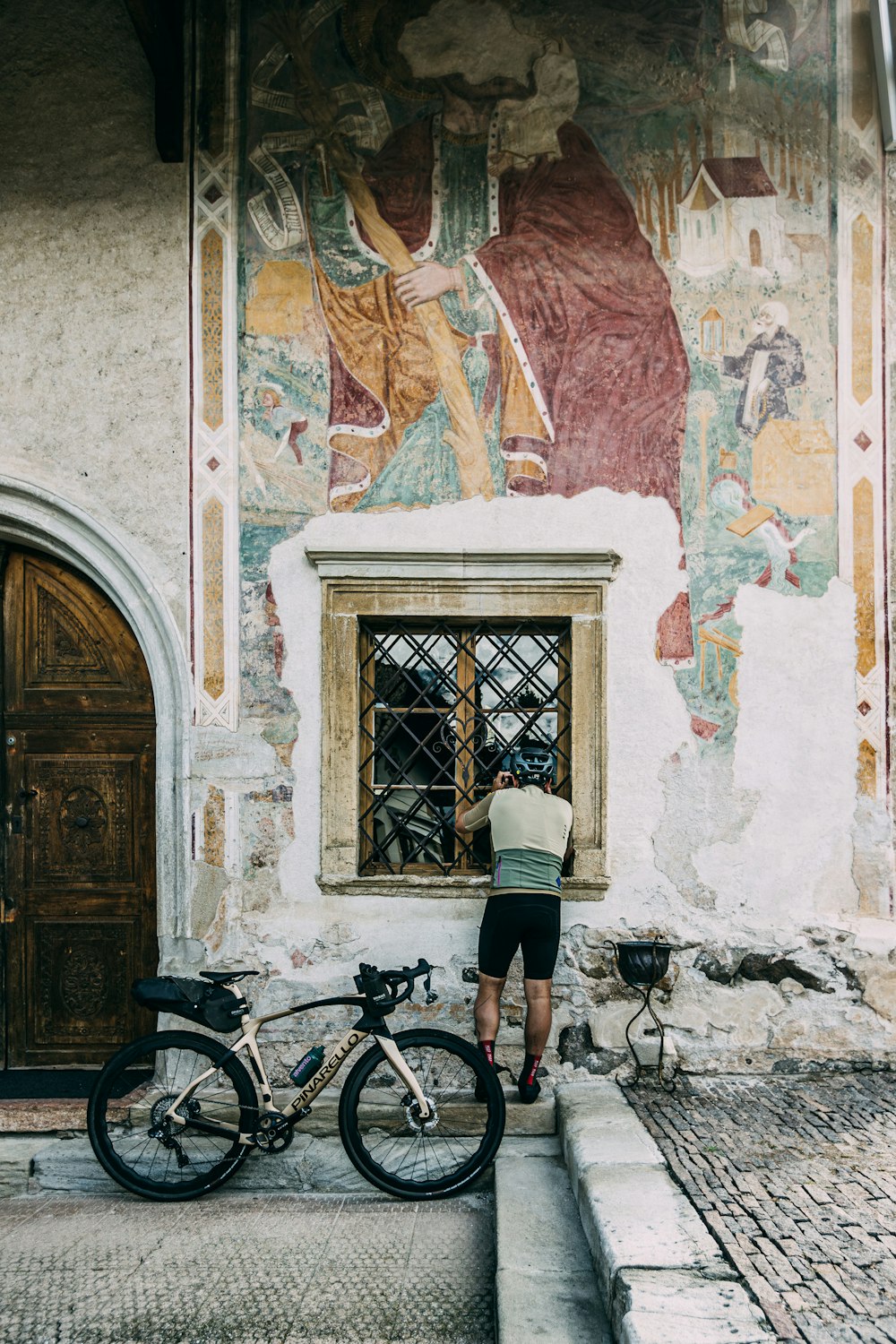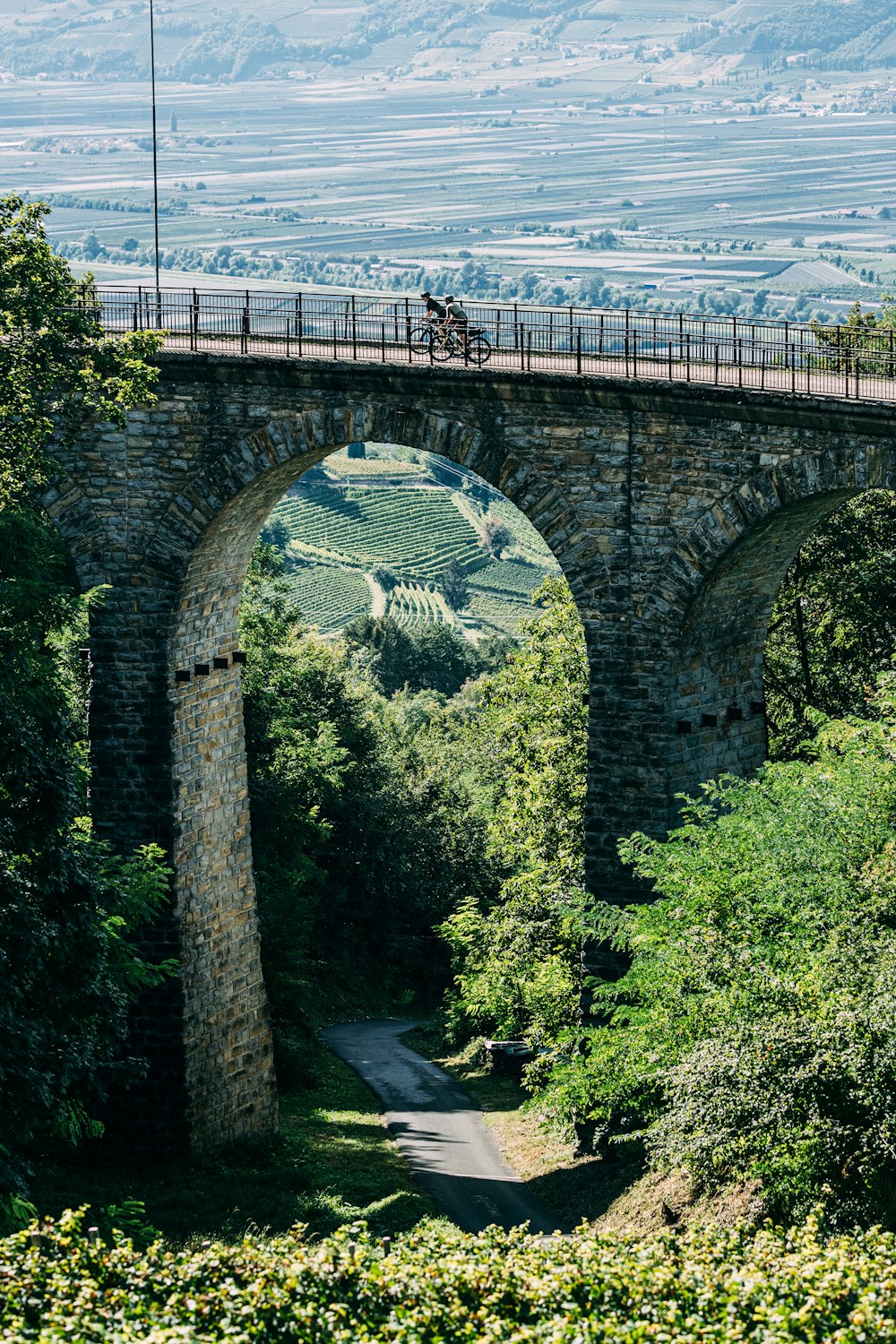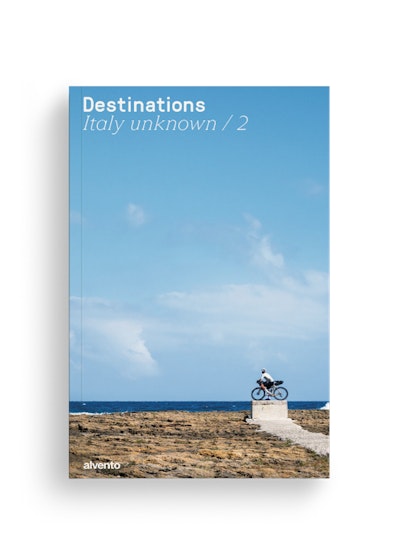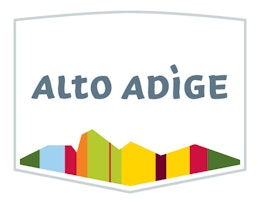
Tour of the Alps
The charm of a great stage race between Tyrol, Alto Adige and Trentino.
Period
Apr - Oct
Elevation difference
5235 m
Total Length
354 km
Duration
4/5 Days
I
Tour of the Alps
00
Intro
01
From the Tyrol to the Valle Isarco
02
Towards the Valle dell'Adige
03
From Val di Cembra to Valsugana
The alarm clock goes off. 6.50 AM. We exchange just a few words, check the weather outside the window and go down for breakfast. The Tyrolean poppy puff pastries are truly delicious. A nice cup of coffee and we are ready to go. We prepare a couple of sandwiches for the journey, settle the last few things and we are out on the road.
Last check: bags, bike computer, water. Here we go. The clack of the clips on pedals officially kicks off our exploration.
We have planned for a three-day trip: we start in Schwaz in Tyrol, stop off in Innsbruck and then enter Italy by the Brenner Pass. We descend along the Isarco River, then, from Bolzano, we follow the Adige River and the Strada del Vino. From Salorno, over the Passo San Lugano, we head towards the Val di Fiemme to climb from there up the Val di Cembra and through the Valle dei Mòcheni to reach the Valsugana. Final destination: Trento. Three regions, three borders to cross: one wonders if they’ll real, or, by now, only imaginary.
The idea for the trip came to us on a rainy day, just like this one. Sitting on the sofa, zapping between TV channels, our attention suddenly drawn to a program where they were talking about the Tour of the Alps, or what for the more nostalgic, would be the old Giro del Trentino. A five-day stage race happening in spring that, since changing its name, spreads over the valleys and mountains of the Tyrol, South Tyrol and, as the name used to indicate, Trentino. We exchange a wink, we’ve agreed: our next bike trip is decided. We will not travel all the kilometres covered by the professionals and we will certainly not unleash the same watts as the winner of the last 2023 edition Tao Geoghegan Hart did.


Let’s cut the nonsense. We set off. The first few rides help us get used to the rain. To warm our legs up and figure out the correct direction. We set off towards the centre of Schwaz and stop only after a few hundred metres: the imposing Gothic church of Maria Himmelfahrt, which means Santa Maria dell’Assunzione, catches our eye. We take a quick peek inside and then set off again towards the hight street. We cycle for about fifteen kilometres, quietly for the most part, so as not to disturb a town that is slowly waking up. Trying not to think about the cold, we often find ourselves looking up: typical houses, bakeries, some bicycles here and there. After a few kilometres, the country gives way to cultivated fields. Little by little, the sky clears, the rain stops, and on the horizon, we start to see the huge mountains that surround us.
The ride goes on pleasantly and we reach Wattens. We pass an enormous building: it’s the headquarters of Swarovski. To be honest, we had no plan of stopping. The idea was to go straight ahead: the day is still long and the metres of altitude difference will be many. But the cycle path turns left and suddenly we are faced with an enormous ‘vegetation’ sculpture: it’s André Heller’s crystal-eyed giant and the gateway to Swarovski Crystal World. Wow, let’s call for a change of plan. We explore further, even if we have to park our bicycles outside. It’s an unbelievable place: we are amazed, wandering among installations by world famous artists, renowned architects and designers who’re having their own take on this world of crystals. After our walk through labyrinths, among sculptures and lights, we get back onto our saddles. It’s time to go a bit further and get closer to Innsbruck.
The road goes on gently and time goes by as we chat, cycling at an almost leisurely pace. It’s the landscape that dictates our speed: soft hills, beautiful colours and very little traffic. We ride along a few stretches of dirt road with smooth surfaces. And the weather also seems set to improve.
The track begins to climb, the woods become thicker. We tackle a nice stretch of gravel that might’ve suffered a little from the heavy rain of last night. A couple of sharp climbs and the scenery changes completely. We are now in Igls, a village that boasts some ski facilities but above all the glorious bobsleigh run that was built in 1964 for the first Winter Olympics held in Innsbruck and was still used in the 1976 edition. It is still open to this date. We take a short detour to go and have a look: the parabolic curves, practically vertical, are enough to give you the shivers; the narrow straights and the total silence around us bring to mind the races seen on television, with the bobsleighs hurtling down the track at crazy speed.
We leave the village and set off on a paved road. On the right, in the distance, we can see the Europa Bridge, the link between Italy and Austria. We thought that by now the rain would be gone but, the closer we get to the Passo del Brennero, the worse the weather gets.
We put on some more clothes to get warm and step up the pace: it’s cold and we need something warm to eat.
We pass through Matrei am Brenner and, although the fog makes the landscape a little gloomy, we are impressed by colourful houses that run along the road. The village is famous for the Lüftlmalerei, the traditional wall art with which the façades are decorated in many villages in the Tyrol and Bavaria.
We look upwards as we cycle a little further and then we get back on a path that follows the course of the river. The rain gives no respite, but the track we had planned includes a detour of about twenty kilometres to visit the Obernberger See lake..
We stop for a moment and catch our breath: we can’t make our mind up on whether to go straight ahead and find a place to stop or to follow the original plan and take the turn towards the lake. In the end we choose for the second option: we turn right, reach the car park and turn onto a dirt road which, one metre at time, climbs up through a forest. The stones are slippery, the wet gravel doesn’t help and forces us to climb more by force than agility. A little over two kilometres and we come to the top: we look at each other, dry ourselves off as much as possible and agree on one thing: it was definitely worth it. A fairytale vista opens up, with centuries-old trees, the lake dominating the valley, the incredible scent of nature. We ride for a while, cross a very slippery wooden bridge that takes us to the opposite bank of the river and then, feeling very cold but pleased with the choice, we take the road back.
The first part retraces the route we’ve come from. We then turn left and take the road towards the Passo del Brennero. When we reach the border between Italy and Austria, we decide to stop: we need to eat, get warm and decide where to sleep. So, back on our bikes, we descend for about ten kilometres and reach Colle Isarco, the joining point between the valley by the same name and Val di Fleres.
Today we treat ourselves to an extra hour of sleep. Finally, sunny weather and warmer temperatures are back.
A hearty breakfast and we set off again along the Valle Isarco cycle path, always slightly downhill, towards Bolzano. Our first stop is Vipiteno, or Sterzing in German. With a slight deviation, we pass through the centre and cycle under the famous Torre delle Dodici, the town’s symbol. We lose ourselves among the colourful little houses, narrow streets lined with shops and the picturesque medieval squares.
We are in South Tyrol and one can tell: the colours, typical houses and a great care for gardens and greenery typifies the places we pass through. We resume our journey and the cycle path, as if to remind us of local traditions, passes through dozens of apple orchards, faithful companions of our journey from here on. We reach Bressanone, or Brixen if you go with the Germanophone option. We quickly pass through the centre and continue. The next village to greet us is Chiusa. It’s on the Most Beautiful Villages of Italy list and, as we cycle through it, we cannot help but notice that it is fully entitled to its reputation. Narrow alleys where to get lost, paths leading from the town centre towards the surrounding hills, and the monastery of Sabiona, one of the oldest places of pilgrimage in South Tyrol, rising high as if to watch over the valley.
This is where the road to Val Gardena starts and from there to the Dolomites. But we have different plans. We continue along the fiume Isarco and reach Bolzano. We enter the city and once again we are amazed by how bicycle-friendly all these places are, and how mobility on two wheels is now an integral part of the city’s dynamics.
We slow down, partly to enjoy the scenery, partly because the cycle path through the centre is particularly busy.
Little by little the buildings give way to cultivated fields and after a few kilometres we find ourselves on the Strada del Vino (Südtiroler Weinstraße: a spectacular route of around 70 kilometres that touches on sixteen municipalities. We ride through vineyards, wine cellars and absolute peace and quiet. The road then turns right and, slightly downhill, we get to the lago di Caldarno. Every now and then other cyclists slow down and try to fully immerse themselves in the landscape. We reach Termeno, a very picturesque village and well known to wine lovers because its German toponym, Tramin, indicates the production area of Gewürztraminer, a very fragrant white wine. Having passed Cortina on the Weinstraße and Salorno, we keep cycling, alternating between light conversation and silence. We let ourselves be lulled by these roads and the wonders we encounter as we go along. We come into contact with the rhythms of village life, beautiful landscapes and roads that seem to have been created to greet cycling enthusiasts. The last stop of the day is Egna. We become lost in low porticoes, hidden alleys and wonderful sceneries. We decide to stop here for the night. Our eyes are full and our legs tired, and this is the ideal place from where to tackle tomorrow’s stage.
Today’s route involves cycling along what the people of Trento call the Vecia Ferovia, considered as one of the most spectacular cycle paths in Trentino Alto Adige. The railway was built in the early 20th century by the Austro-Hungarian army. From the 1960s onwards, with the development of road transport, the route was decommissioned and today this railway has been transformed into an amazing cycle path, mostly unpaved, connecting Ora, in the Adige Valley, with Cavalese, in the Val di Fiemme. Shortly after the start, we leave the town and, almost without realising it, begin what will be an almost 30-kilometre climb, but with very manageable gradients. Slowly the vineyards give way to orchards. We say goodbye to South Tyrol and head towards Trentino.


The landscape that we had become accustomed to yesterday changes, giving way to wilder countryside, old farmsteads and spectacular forests. We lose ourselves amidst the very old oaks of the Biotopo della collina di Castelfeder, and after leaving behind us a few typical farmsteads, the road returns to the woods and cultivated land. Little by little we reach the Passo San Lugano, where the tracks of the old narrow-gauge railway can still be seen.
After almost 1.000 metres of altitude gain, we return to the paved road and begin to descend through the Val di Fiemme. We reach the valley floor and take the road to Valfloriana, a scattered municipality at the entrance to the Val Cembra. The road starts climbing again. And all considered, we’re actually pleased: the temperature is rather low and a bit of climbing helps to warm us up. After a couple of bends, the gradients increase sharply, reaching peaks of 15% before the Passo Redebus. From here we avoid the road down the valley, and decide to cruise at altitude. We are now in the Valle dei Mòcheni and we realise immediately that this place is very different from the areas we have crossed so far.
To our amazement, we see signposts and road signs written in what to us looks like German. Wrong: it is actually the language of Mochena, behind which there is a long history. Around the 16th century, men arrived in these parts from Bavaria to work in the Erdemolo mines. Since then, they have formed a kind of community whose cultural traditions have largely been handed down to the present day. Particularly the language – which is still taught at primary school – and the traditional cuisine. The cornerstone of this community is indeed the village of Palù del Fersina. We decide to extend our route a little and visit the village. It is a tiny hamlet in the middle of meadows, surrounded by a spectacular mountain range. A little higher up, at an altitude of about 2.000 metres, near the lago di Erdemolo, there is still a snowfield able to withstand even the scorching summers of recent years. Here, it really seems that time has other rhythms, other stories and other priorities. We take the right amount of time to get to know the place and exchange a few words with a lady who’s busy watering the flowers. She tells us that she can’t wait for the snow to start falling.
We fill up our water bottles and set off again. We head down a descent with an altitude difference of almost 1.000 metres and go on towards Pergine. Before reaching Levico Terme, we take a small road on our left that climbs among dense woods. From here we reach Forte Tenna, a late 19th century building placed here to control and defend the Valsugana and the plain towards Caldonazzo. After a quick visit, we go back along the road we came from for about fifty metres, turn left and descend along a spectacular track through woods and stone walls, which takes us to the lago di Levico.


This is a fast track and soon enough we reach a second, larger lake, lago di Caldonazzo. We cycle along the western shore and head towards Pergine Valsugana. We go through the town centre, then a quick deviation takes us below the spectacular Castel Pergine, formerly a Roman settlement and later a medieval fortress.
We have reached the final part of our itinerary. Waiting for us, at the bottom of the Val d’Adige, is Trento, that we reach after about ten kilometres.
As always happens on our bike trips, the closer we get to the final finish line, the more we slow down, as if to delay the arrival for a little longer. We talk, exchange opinions and feelings and pretend that nothing has changed. As if our adventure isn’t really about to finish.
Nonetheless, we are now at the station. From here, a train will take us back to our starting point. The ride has been full of excitement. A bit because, in our own way, we retraced part of the roads of the Tour of the Alps and felt a little closer to Tao Geoghegan Hart and his companions. A bit because these three regions display all of their cultural differences, but also bridging the borders that are by now imaginary, proving to be united in a common vision. And once again, cycling was the best possible way to fully grasp and experience all of these nuances.

Bike type
Gravel
* informazione Publiredazionale

Texts
Carlo Ferrero

Photos
Francesco Rachello
Photos
Tornanti.cc
Cycled with us
Carlo Ferrero, Silvia Insam

This tour can be found in the super-magazine Destinations - Italy unknown / 2, the special issue of alvento dedicated to bikepacking. 12 little-trodden destinations or reinterpretations of famous cycling destinations.





















